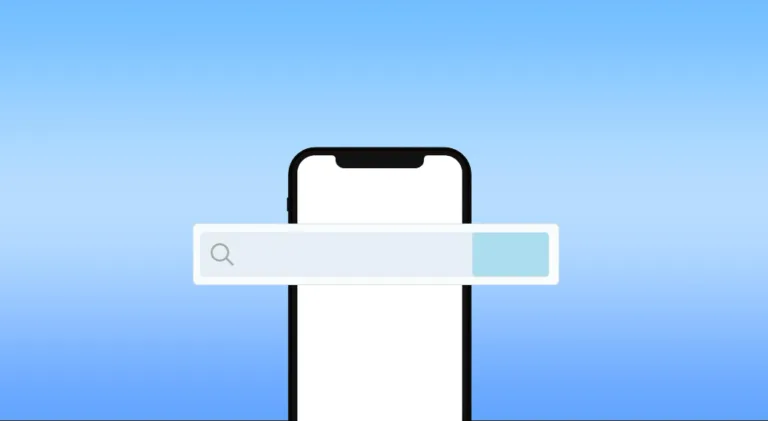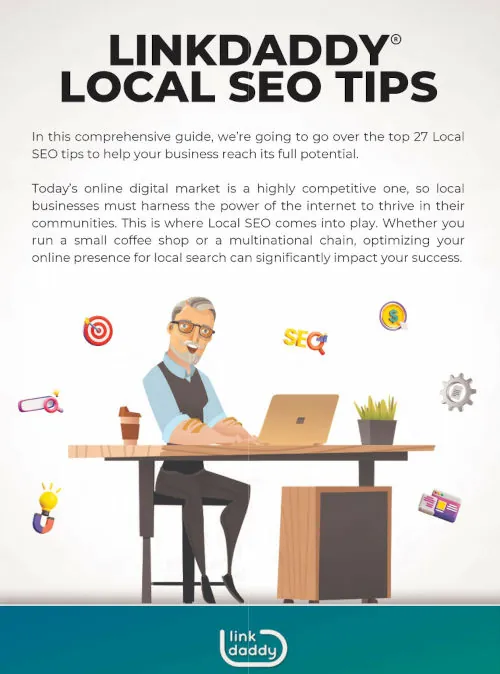The competition for a place on the first page of Google is intense but with the right SEO effort and work it’s doable. Here’s how.

SEO has grown in many ways, but the one thing that’s remained constant is the importance of appearing at the top of Google Search results.
Being On Page One Counts
The days of simple blue links and a handful of ads are long gone. With all the modern SERP features, the rich results, and personalized outcomes it’s still the case that being on the first page for the keywords that are important to your business is the ultimate goal for organic traffic.
According to a research study that was conducted in 2020, the rate of click-through for a result in position 10 (typically at the bottom of the first page) is 3.11 percent. This isn’t too high, but it’s more than the typical advertising click-through rates of 1-2%.
Although the study didn’t cover anything less than the tenth position, it’s reasonable to believe that following the first page clicks, the number of clicks decreases rapidly to almost zero. When did you last go beyond the first page on one query?
Depending on the query you type in and the type of query, the competition to get on the first page of Google is often fierce. If you put in the proper effort and SEO efforts it’s possible.
Let’s review some of the most efficient, tried and tested strategies to help your pages get there.
1. Improve Internal Linking
I’ve put internal linking at the top since it’s one the most simple strategies to implement, and it can have substantial positive effects on your rankings.

The internal structure of linking on your website is among the most important methods Google determines what your site is all about. And the more Google is aware of this, the more things they can place you on their list for.
Additionally, strategically placed linking between your website pages can lead to you being considered an authority in your niche for the most important topics, which increases the chances that Google will show higher rankings for your site on these topics.
Strategic internal linking is the process of linking up pages in a way that is most appropriate for your users. There should always be a logical reason for a link. It isn’t just linking any page to another page. Instead, search for opportunities where certain pages can enhance or supplement the information provided on the page that a user is on.
Your users will not only get the benefit of having access to more, relevant information, but search engines also appreciate it too (and because of the same reason providing more value to their customers).
This kind of strategic interlinking will also show Google that you’ve got a comprehensive knowledge of the subject which gives them more confidence that the visitors they refer to your website will come back happy and content.
2. Find Your Threshold Pages
Threshold pages are those that are ranked just below page one (traditionally the positions of 11 to 20). They will likely generate little to any traffic, however, with some adjustment, they can climb into the “money” positions of the first page. They should be on your list of priorities since making these pages appear on the first page is typically much easier than ranking content that is new.
Begin by using the rank tracking software of your choice to separate your pages that have keywords that rank in positions of 11 to 20.
Check out all your organic keywords on Google Analytics and look at their performance metrics. Sort the results by volume of searches to bring the best result pages to the top. Apply the other suggestions from this post to these pages, and get them on to the first page!
3. Research Competitive Content

If you have pages that are important which aren’t getting to the first page there’s a basic truth you need to acknowledge: your competitors’ pages that are page one have something that you don’t.
We don’t yet know the logic Google employs to determine the reasons why these pages rank higher than yours, a lot of things could be revealed when you cross-examine.
So, you need to take the time to reverse engineer and look at these competitors’ pages for are any results that are ranked higher than yours and then carefully evaluate them against your site. Here are a few questions to help with the process:
- Are the contents of the website significantly better in quality (more complete, conveys authority without ignoring those who are intended to read it, and includes more relevant sources and information)?
- Do you think it is better written?
- Does it have keywords or topics that aren’t on your page?
- Do they have superior internal links for other web pages on their website? Do other pages that are relevant have links to it?
- Are the external profile links (backlinks) more extensive and/or superior quality?
- Does it have “extras” that might be beneficial to the users (images charts, videos, images tables, etc.)
While you shouldn’t duplicate the pages that rank higher than you, the things they’re doing that you’re not could give you a good idea of how you can improve your website to compete with them.
4. Move Important Pages Higher in Your Site Navigation

This strategy isn’t appropriate for every page of your website however, it can be used for the principal pages. One method Google determines the relative importance of a website is by comparing its location to the homepage via internal navigation.
Your homepage usually receives many external links and thus has the most authority on your website. The link equity flows to other pages that are linked from the homepage and those that are directly linked receiving the most of the credit. Moving your most important pages closer to your home page can increase the authority of your pages and thus the likelihood of them ranking higher.
5. Make Your Site Mobile-Friendly
This is a simple tip. If you’re still not making your website mobile-friendly, now is the best time to take the initiative.
We’ve long since passed the point of no return where the majority of searches start with mobile devices. “Mobile-friendlyness” is an aspect of the Page Experience update, and it is logical that Google will prioritize content that is mobile-friendly for users using mobile devices to search.
Anything you can implement to make your website more user-friendly will eventually align with the objectives Google has set to achieve in its algorithm for ranking search results.
6. Earn/Build More Links
Google has provided us with many more things to think about today in regards to ranking (content quality and relevancy semantic and entity connections and much more) however, good old-fashioned backlinks remain highly associated with the ability of pages to rank.
Earning links is the process of making content of such quality and trustworthiness that other websites would be compelled to link to it. It needs to be good enough and relevant enough to serve as a reference for the content on other websites. Building links requires searching for opportunities for pertinent links from reliable websites.
To find out more about how LinkDaddy® can help you improve your backlink strategy just click here.
7. Pursue Featured Snippets

The process of climbing the ladder of ranking positions is a difficult (but essential) one. Sometimes, you are able to climb to the top of the group. Featured Snippet is a feature that is part of Google Search where one of the most popular results is made available in an extensive snippet of text high on the results page.
Although the rich snippet could go a long way to satisfy the searcher’s needs, however, the experiences of many SEOs have shown that Featured Snippets typically generate a large amount of traffic, since people want to know more about what’s in the excerpt.
There’s no guaranteed strategy to be featured on a featured snippet however here are some ways to improve your chances:
- Check out different variations of your keyword on Google search results to see whether a Featured Snippet of your keyword is available for each one of them to determine opportunities. Certain SEO tools can identify the opportunities automatically. The Featured Snippets are typically displayed for keywords that have an informational purpose or for queries that are an inquiry.
- When a Featured Snippet of Content is presented, pay attention to the format of the content. What is it? Table or paragraph text, bullet-list, video or another type? Although it’s not essential to duplicate the format, it may provide an insight as to what type of content Google likes to use for this query.
- Take a look at the top website for this search. Find ways to improve it so that it is more appealing to Google to include it as an Special Snippet.
- Keep in mind that when you are submitting the Featured Snippets section, Google wants content that clearly concisely and precisely responds to the purpose of the search.
8. Refresh Past Performers
The most successful content has a lifespan that looks like this. Once the content is published, it starts to gain rank and, consequently, traffic. In the end, it is almost inevitable that with time the flow of traffic will begin to deteriorate.
What causes this to happen? There are a variety of possible causes, including; better, more recent, or more authoritative content being published by other publishers, or the purpose of the question has changed as time passes.
Whatever the reason behind your site falling out of its previously higher ranking, there are methods to revitalize it and make it more visible on the search results.
Splice Keyword-Rich Content
Splicing is a method you can apply when your content is doing well. It will allow the content to keep growing instead of falling into decline.
The splice method involves identifying the pages on your website which are ranked for more than the average number of keywords. Although it may seem like a good thing, however, it’s actually a sign of missed opportunities because certain keywords aren’t ranking in the same way as they should.
In splicing, you determine the lesser-performing keywords on the page you are currently on that could be a good fit. This could be the case if the page appears on the second page of results, or does not rank well but has significant demand for it.
After you’ve identified the opportunities, develop new pages with content that focuses on these keywords. You can then link these pages to your first webpage that’s currently ranked. This provides Google with more targeted landing page pages for a subject area where you have already been proven to be trustworthy and authoritative.
Expand and Enrich
If the content you have is in the decline stage of its lifespan, you may be required to think about destroying it (especially in the event that it’s obsolete or ineffective to recover).
But, you may be capable of reviving it by making the page more appealing to be more relevant to the current SERPs. For this to be done, type in the keywords that are most relevant to what you would like your page to rank, and then spend some time looking at the content of all pages that rank higher than yours.
Reverse engineer again. Consider what they have that your site doesn’t. Are there topics, keywords, or elements (images videos, images, and so on. ) and links or other elements you can add to your website?
The goal here isn’t to duplicate exactly what competitors do, but to gain an understanding of what Google might find on them which makes them more valuable than your own page.
Conclusion
Appearing on page one of Google SERPs should still be a high priority. A combination of good on-page SEO and a strong backlink profile will give you the best chance of doing this on a regular basis.
If you would prefer someone else to put this in place for you, we have a selection of plans and strategies that would make this happen.
To get a free backlinks campaign valued at $35 please click here.









